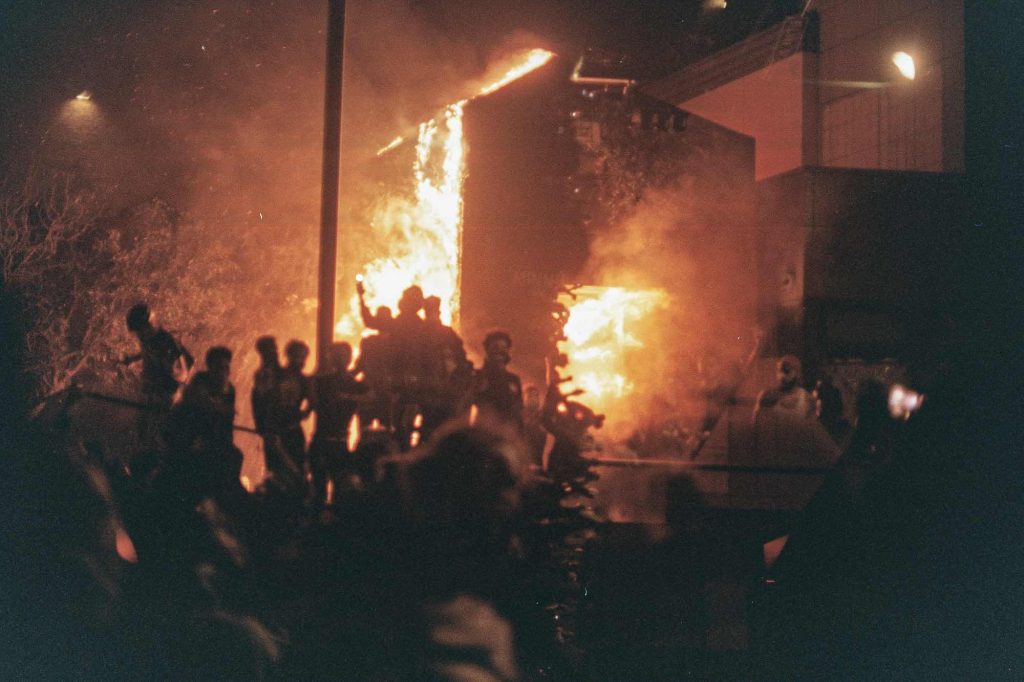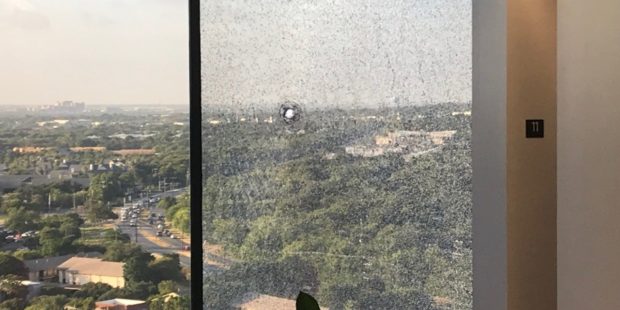Written by: Greg Ellifritz
You’ve probably seen the news about the sniper attack on an ICE detainment facility in Dallas this morning. A different ICE facility was attacked by 10 people back in July. I’ve been predicting an increase in this type of attack since we first started seeing them ramping up in 2020.
Back during the George Floyd “mostly peaceful” protests we saw quite a few police buildings attacked. Rioters took over a Minneapolis police substation. Rioters also took over the Seattle East Precinct police station after officers abandoned it. A California officer was ambushed and shot outside his police station.
There were countless more attacks back in 2020. Unfortunately, cops haven’t done anything in the intervening years since then to either harden their facilities or train to respond to these type of ambushes.

This isn’t a new trend and has very little to do with current events. Attacks on police facilities have been increasing for some time. In 2019 a US Customs and Immigration office in San Antonio was attacked by gunfire from the outside. A couple months before that, a Tacoma ICE facility was attacked with an incendiary device.
Those aren’t the even first cases of police facilities being attacked by gunmen outside. Take a look at the news articles linked below.
2015 Dallas Police Department Attack
2016 Pierce Co Washington Attack
2016 Maryland Police Department Attack
There have been dozens of other attacks inside police departments and attacks on police officers outside in the parking lots. It turns out that police stations may not be the safest place to hang out.
Let’s look at the trends and make some predictions.
We know that the latest active killer trend is for the killer to start firing outside and then work his way into the building.
We are also seeing people openly protesting and expressing contempt for police officers in massive numbers.
It doesn’t take too much brain power to link the two. I think there is going to continue to be an increase in active killer attacks on police facilities in the future.
What should cops and police employees do when their building comes under attack? Here are a few suggestions:
First, lock the doors. If the killer can’t get inside, you’ve limited his victim pool. You don’t want this shooting moving indoors where more victims are hiding. Keep the killer outside. That denies him access to victims and makes it easier for police to capture or kill him.
Don’t evacuate. I’ve been a big proponent of evacuation instead of lock down in many school and business shootings. This is not a situation where evacuation makes sense. If the shooter is outside, you want your people inside.
Stay away from windows and any glass in the room. In several active killer incidents where shooters have fired at schools from the outside, people have been cut by flying broken glass as the killer shot at windows. Stay away from the windows and any large mirrors or glass display cases that might be broken by gunfire.
Get low. The killer firing outside would have to be very close to the window to fire rounds that would travel low to the floor. If firing from shoulder height into the window or wall, sheltering victims are less likely to be hit the closer to the floor they can get.
Turn out lights and close window blinds. Don’t provide the shooter with any visible targets.
Consider moving furniture in front of the windows. After closing blinds, as long as rounds aren’t coming through the window, it might make sense to barricade the window area with pieces of furniture as additional cover. Most exterior office building walls are fairly resistant to gunfire. Windows are not.
Placing a few desks or book cases up against the window may provide enough extra layers to slow down the shooter’s bullets before they hit the victims inside.
Consider moving to interior hallways or upstairs. If the shooter is firing from ground level, moving upstairs makes a lot of sense. The angle of firing from a person on the ground into an upstairs window almost certainly ensures that people low to the floor upstairs won’t be hit. The only downside is that it may be harder to escape a second floor hiding spot if the killer breaches the door and makes entry into the school or business.
If gunfire is coming through the exterior windows, moving to an internal hallway will likely put another wall between the bullets and the victims and also insulate them from flying glass hazards.
The problem with this solution is that many hallways in government buildings are long and straight. They often line up with exterior doors on the ground floor. If the shooter starts firing into the exterior glass door in line with the hallway where the people are hiding, the walls of the hallway will act as a “bullet funnel” and virtually ensure that more victims are hit.
Moving upstairs or into a hallway might be good moves. They might also be fatal choices. It depends on the structure of the building and where the killer is firing from.
Implement drills to move personnel towards protected positions inside the building. Many parts of the country have tornado drills where occupants move away from large windows and towards the most internal rooms of the building for protection. That “tornado drill” could be easily modified to become a “sniper drill.”
Work with nearby businesses to secure the roofs of any buildings overlooking the police facility. Looking at Charlie Kirk’s killing and the most recent Dallas ICE attack, we see the shooters using rifles from an elevated platform. Anything the cops can do to prevent access to a sniper overlook position will be valuable.
Counterattack. The armed officers in the building should immediately mount a counterattack. The most effective methods of doing so involve police facility roof access. If an armed person can get up to the roof, he or she could fire down on the shooter without being seen. Do your officers have access to the building roof? Maybe they should.
Absent an elevated sniper position, cops should be trained to exit the building opposite the side of the gunfire and quickly work to flank (get behind) the shooter before engaging. You don’t want to be trading bullets with a dude who is better armed than you. Don’t just run outside and confront him. Set up an ambush or flanking position and shoot him by surprise. Do you have pre-established external ambush positions identified in the event you encounter a situation like these? Maybe you should.
Long term considerations. If the trend continues, we will see some adaptation. Roofs of government buildings will be constructed with sniper loops or observation points. Snipers or other armed volunteers may be regularly stationed to the roof-based observation points. Exterior window glass will be covered with a reflective material and/or “hurricane film” to prevent the windows from breaking into dangerous shards under gunfire. Officers will do regular exterior patrols of their own station.
In many third world countries where terrorist attacks on police facilities are common, you will see an officer wearing plate body armor and carrying a rifle stationed at every entrance point. The officers I’ve seen protecting police stations have been alert and paying attention. They are engaged and watching the crowd constantly instead of being on their phone like many bored American cops. That might be a common trend here in the future.
It depends on whether this trend becomes more common or just fades away. We don’t know what will happen. The most prudent police department leaders will review their relative risk from external gunfire and adopt a few of these suggestions to reduce casualties in the event of an external attack.

San Antonio ICE office attack
